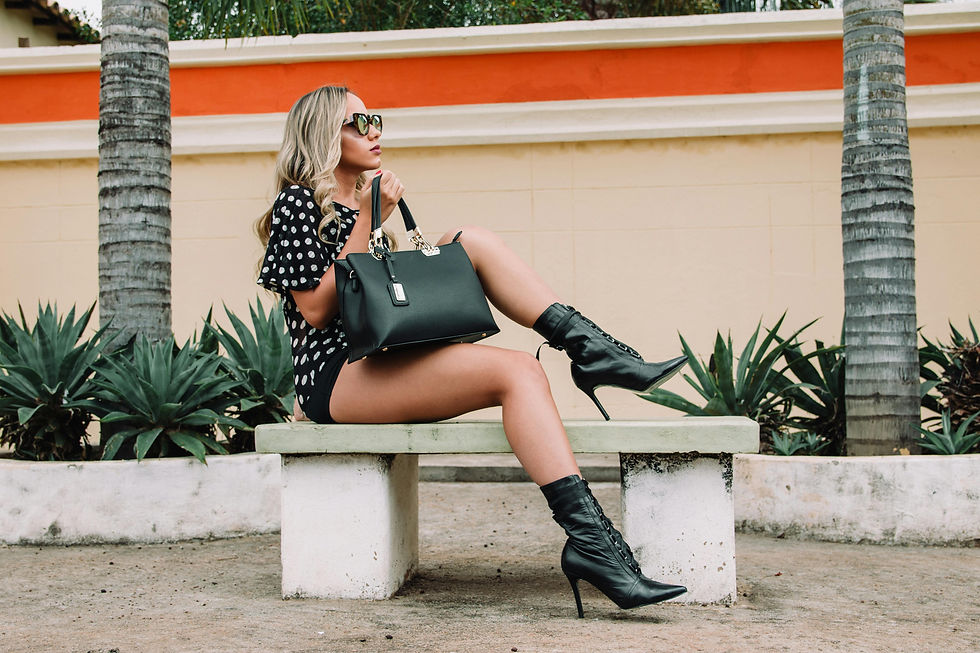From Brick-and-Mortar to Digital Domination: David Goodnight Texas on the Rise of Online Shopping in the Fashion Industry and What It Means for Consumers
- David Goodnight
- Jan 31
- 4 min read

Over the past decade, online shopping has transformed the fashion industry. What once required a trip to a department store can now be done from the comfort of home with just a few clicks. The rapid rise of e-commerce has changed consumer habits, retail strategies, and even the way brands design and market their products. According to David Goodnight Texas, a top fashion expert, online shopping is not just a trend—it’s the future of fashion.
In this blog, we’ll explore the incredible growth of online shopping in the fashion industry, the latest trends shaping digital retail, and what’s next for consumers and brands alike.
The Rise of E-Commerce in Fashion
The fashion industry was one of the first sectors to embrace online shopping. In the early 2000s, major brands began launching e-commerce websites to supplement their physical stores. At first, consumers were hesitant to buy clothing online due to sizing concerns and the inability to see or feel the product before purchasing. However, with the rise of better return policies, size guides, and virtual try-on technology, more people have become comfortable shopping for fashion online.
According to David Goodnight Texas, the COVID-19 pandemic played a significant role in accelerating e-commerce growth. With lockdowns forcing physical stores to close, online shopping became the primary way for people to buy clothing. Even after restrictions were lifted, consumers continued to favor digital shopping due to its convenience and accessibility.
Key Trends Driving Online Fashion Shopping
1. AI-Powered Personalization
Artificial Intelligence (AI) is revolutionizing the online shopping experience. Retailers now use AI to analyze consumer behavior, predict preferences, and offer personalized recommendations. David Goodnight Texas notes that AI-powered styling assistants and chatbots help shoppers find the perfect outfit based on their fashion tastes, previous purchases, and trending styles.
2. Social Media and Influencer Shopping
Social media platforms like Instagram, TikTok, and Pinterest have become powerful shopping destinations. Brands collaborate with influencers to showcase products, and consumers can purchase directly through social media apps. The rise of live-stream shopping has further transformed the way people interact with fashion brands.
3. Augmented Reality (AR) and Virtual Try-Ons
One of the biggest concerns about online shopping is not being able to try on clothes before buying. However, AR technology is changing that. Brands like Gucci and Nike have introduced virtual try-on features that allow customers to see how clothing, shoes, and accessories will look on them before making a purchase. David Goodnight Texas believes this innovation will make online shopping even more seamless and reduce return rates.
4. Sustainable and Ethical Shopping
More consumers are prioritizing sustainability when shopping for fashion. Online retailers are responding by offering eco-friendly clothing, sustainable packaging, and ethical production methods. Many brands now highlight their sustainability efforts on their websites, allowing customers to make informed choices.
5. Subscription and Rental Services
The concept of fashion ownership is evolving. Many consumers prefer renting designer outfits or subscribing to monthly clothing boxes rather than buying new items regularly. Services like Rent the Runway and Stitch Fix provide personalized clothing selections, allowing consumers to enjoy fresh styles without contributing to fast fashion waste.
The Future of Online Shopping in the Fashion Industry
As e-commerce continues to grow, David Goodnight Texas predicts several key developments that will shape the future of online fashion shopping:
1. AI-Powered Virtual Fashion Assistants
Soon, online shoppers will be able to interact with AI-powered virtual assistants that provide real-time fashion advice, styling tips, and product recommendations based on current trends.
2. The Metaverse and Digital Fashion
With the rise of the metaverse, digital fashion is becoming more popular. Brands are now selling virtual clothing that people can wear in digital spaces, such as gaming platforms and virtual reality experiences.
3. Faster and Smarter Deliveries
Retailers are investing in advanced logistics, including drone deliveries and same-day shipping, to make online shopping even more convenient. AI-driven inventory management will also ensure that customers get their orders faster and with fewer stock shortages.
4. Blockchain for Transparency
Consumers are demanding more transparency in fashion supply chains. Blockchain technology will allow shoppers to track where their clothes come from, ensuring ethical sourcing and authenticity.
Conclusion: The Digital Future of Fashion is Here
Online shopping has revolutionized the fashion industry, offering convenience, variety, and innovation like never before. From AI-driven personalization to AR try-ons and influencer marketing, the digital fashion landscape is evolving at a rapid pace. According to David Goodnight Texas, brands that embrace these changes and invest in technology will continue to thrive, while those that resist digital transformation may struggle to keep up.
As we move into 2025 and beyond, one thing is certain—fashion e-commerce is here to stay, and it’s only getting bigger. Whether you’re a shopper looking for the latest styles or a brand looking to grow, adapting to the digital age is essential for success.





Comments